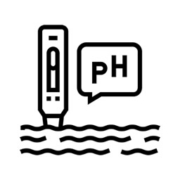Chlorine Dioxide Explained
While similar in name, Chlorine Dioxide (ClO2) is considerably different than Chlorine. ClO2 can be generated using a variety of two part methods or a three part method. All of them are required to be generated onsite, and when combined, they form chlorine dioxide gas. This is a key component & one of the more impactful, as it is highly soluble in water as a result. It does not react with water; however, it remains a dissolved gas in solution. Due to its gaseous state, it is 10 times more soluble in water than elemental chlorine.
Not only is it more soluble, it’s more powerful too! ClO2 has 2.5 times the oxidation capacity (disinfection power) than its oxidizing counterparts chlorine, hydrogen peroxide, and ozone. The reason its capacity is so high is because ClO2 is what’s described as a “selective” oxidizer, meaning it’s not greatly affected by organic matter or a variety of minerals.
This simply means your dollar goes further. Less chemical is needed to target the important contaminants impacting your farm. ClO2 has long been used in the industrial and waste water space due to its versatility and effectiveness. It’s proven against biofilm where others fail & can be used in a very wide pH range so efficacy is never a concern.







